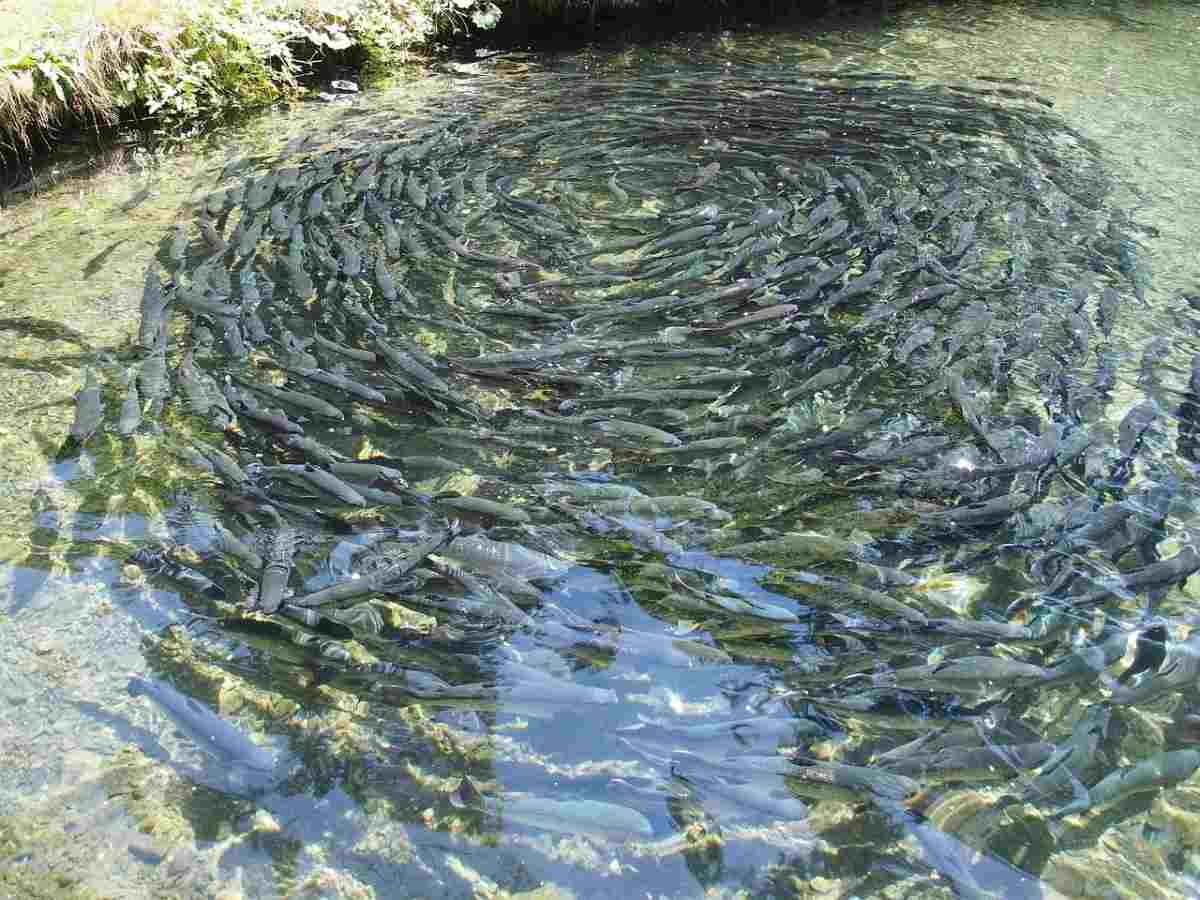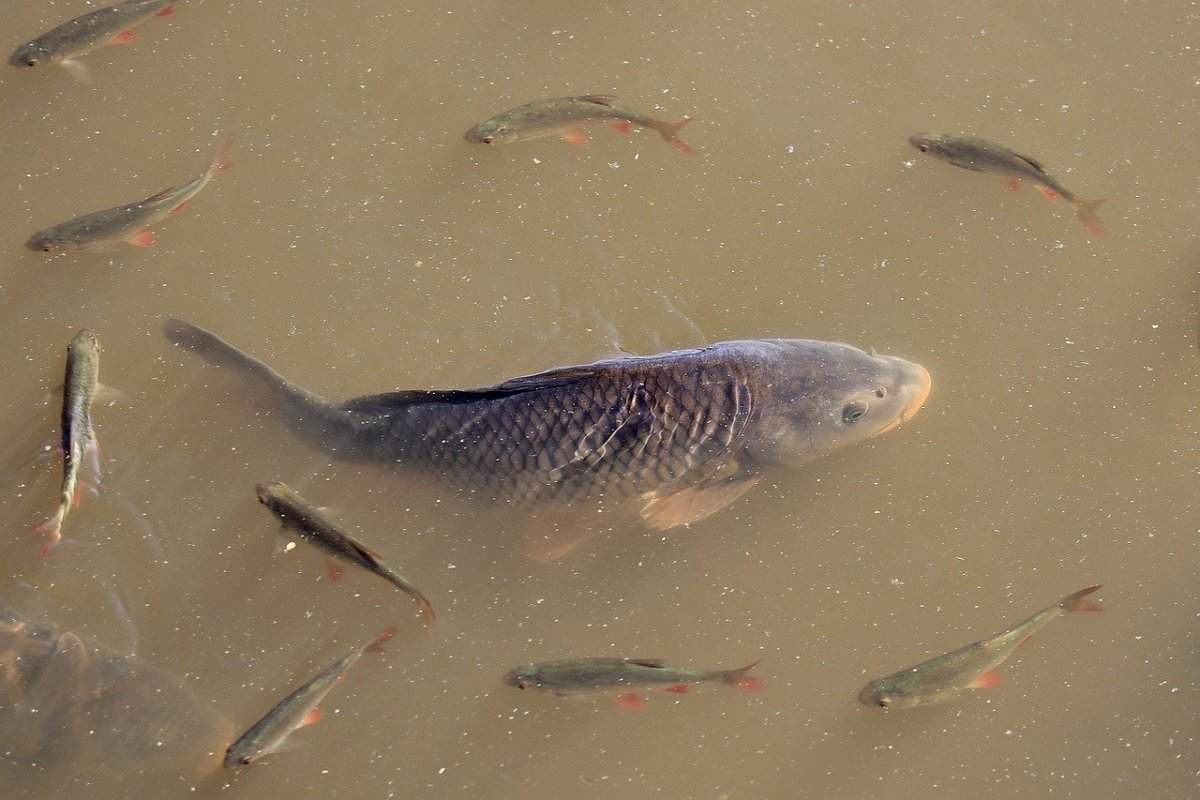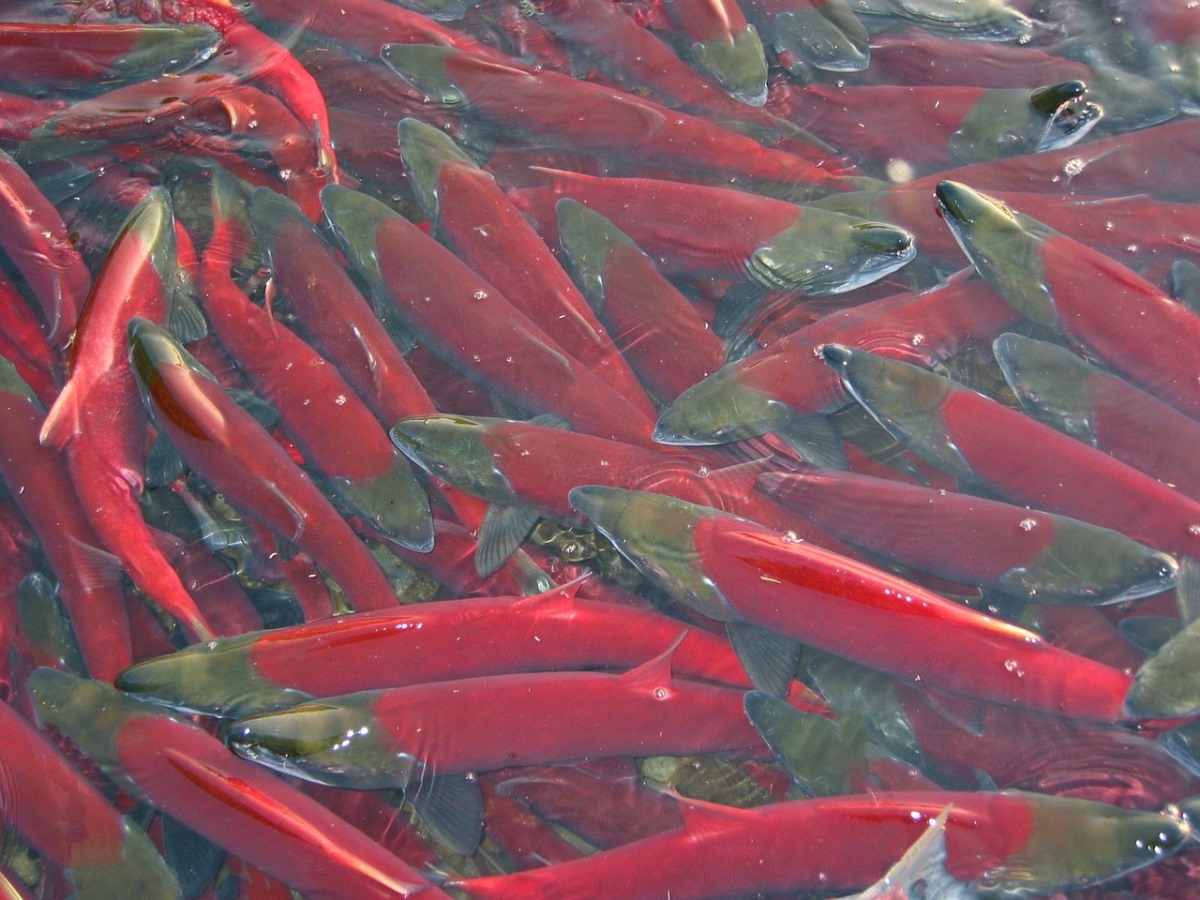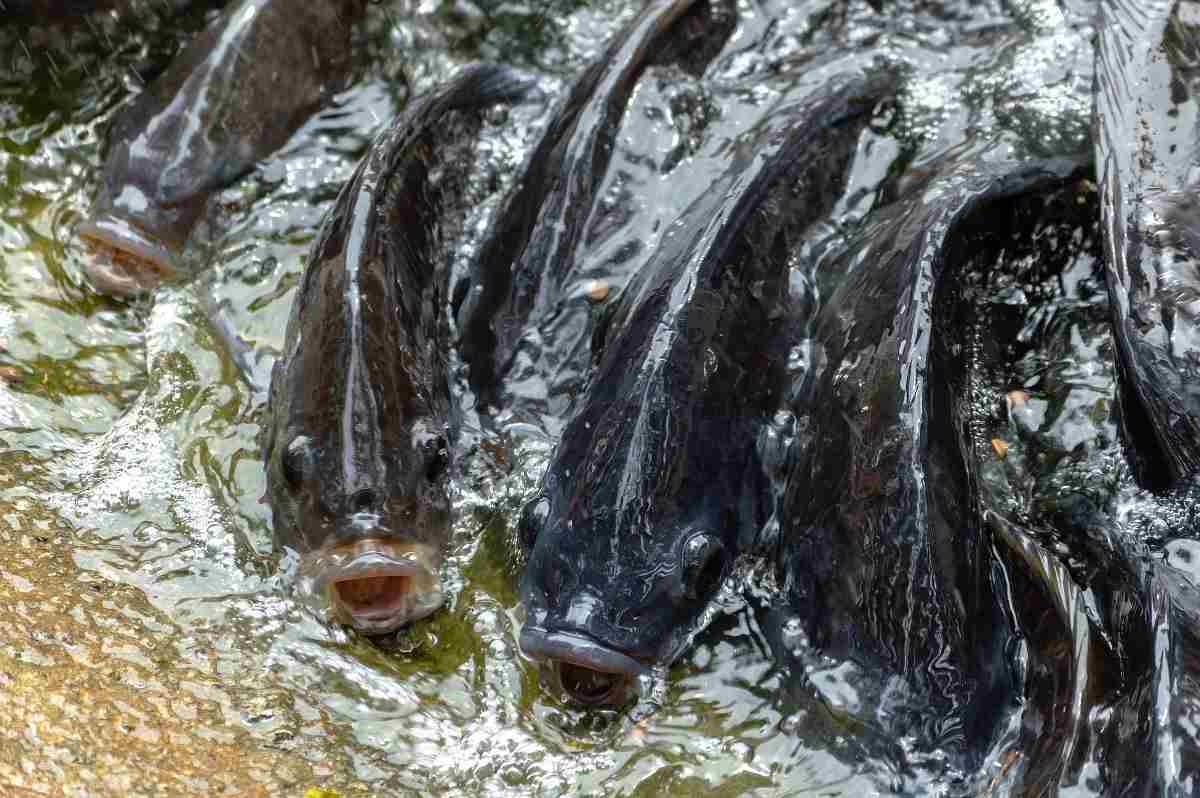Introduction to Fish Farming in Canada: Fish farming is raising fish commercially in tanks and ponds for food production. Canada’s fishing industry is a key contributor to the success of the Canadian economy, and fishing is a global industry. In Canada, the fish industry delivers a wide range of safe and sustainable seafood products to domestic and international markets. It can be integrated into the existing farm to make additional income and improve water management. The DFO (Department Of Fisheries and Oceans) oversees the management of Canada’s aquatic resources and works with fishermen across the country to ensure the sustainability of Canada’s oceans and inland fisheries. The Canadian fishing industry exports over 75% of the products harvested and processed in Canada.
A Guide on How To Start Fish Farming in Canada

The United States is one of the most important markets for Canadian seafood exports and represents about 64% of Canada’s seafood trade. Also, China (11%), the European Union (10%), Japan (4%), and Hong Kong (2%) are key export markets for Canadian seafood products. The Canadian seafood exports are greater than the cost of seafood imports coming from foreign markets. An industry that draws on our oceans should be sustainable to not only protect the environment but also allow continued prosperity for future generations of Canadians.
Advantages of Fish Farming in Canada
- The fish farming business is an economically profitable business venture. There are so many types of fast-growing fish species available. Irresponsible harvesting of fish leads to the depletion of natural species and the extinction of some fish species. So, the fish farming business is a way to conserve species and prevent the depletion of natural resources.
- One of the primary advantages of fish farming in Canada is that it allows companies to produce fish nearly anywhere and even control the production of specific breeds, which ultimately helps meet consumer demand.
- It is a protein-rich, tasty, and healthy food with low cholesterol. Therefore, fish and fish-related products have great demand all over the world. Fish farming has a significant economic role and offers many job opportunities in ancillary services and operations. This business demands day-to-day careful monitoring and special knowledge.
- Another main advantage of fish farming is that it can supply a stable amount of fish throughout the year. Thus, through aquaculture, a stable supply of fish can be assured, which can be quite important, especially in areas where the local population relies on this fish supply to survive.
- The commercial fish farming business is a lucrative business venture worldwide.
- Fish farming allows us to replenish the food fish supply faster than the oceans can produce it and allows suppliers to keep up with demand.
- Usually, fish farms consist of large amounts of fish condensed into a single area. When these fish excrete waste or die, they are released into local water sources, polluting and contaminating them. The commercial fish farming business allows for large fish supplies.
- Also, fish farming provides an important income source for many people, especially for those in the poor parts of our planet. So, especially in regions where there are not too many other business opportunities, fish farming can be a great way for locals to start their businesses and get out of poverty in the long run business.
- You can raise the fish in tanks until they are ready for selling or marketing, and they don’t need the wide capture of wild fish. Therefore, commercial fish farming mainly helps in preserving natural ecosystems.
- Generally, fishes are fed various nutrient and protein-enriched foods or pellets on commercial fish farms. So farm fish become healthier than wild fish, and there are indeed various types of fish species all over the world. So you can select the desired species for your fish farming business. We also know that fish is popular as a food all around the world; thus, there is already an established fish market available for you. You don’t have to worry about where to sell them.
- You can start a fish farming business in large or small-scale production, and it all depends upon the resources available to you. And if you don’t have sufficient funds or money to start this business, you can apply for bank loans.
Start a Fish Framing Business in Canada
In case you missed this: Poultry Farming In Brazil.

Select the type of fish farming – The first thing you need to consider when starting a fish farming business is the type of fish that you are going to use for farming. Choosing the right fish species plays an important role in the success of the fish farming business. The decision must be based on a maintenance point of view, market demand, management outlook, availability of resources, etc.
Understand the target market – Business planning is very important before starting a fish farming business. Also, we must do deep market research before starting a fish farming business. Try to understand the local market demand. Develop an alternative marketing strategy, and consumer types will differ depending on the type of fish you are raising.
If you raise fish for commercial food products, re-stocking, or sport, your base will have large businesses. It needs a higher quantity of fish. Some consumers can include state or federal organizations that re-stock natural resources. If you raise fish for pets or aquariums, the consumer group will be pet shops and specialty fish dealers. Customers may be selected to contact you directly to remove the mediators and expedite sales.
Right spot or place to select for fish farming – It is very important to make the right selection of the place for constructing a fish pond or tank. Also, it is important to know the right temperature and conditions for breeding fish. You need to remember that temperature plays a major role in the growth cycle of the fish, as during winter seasons, fish do not grow much in size. Therefore, it is important to try and construct a fish pond or tank before the winter seasons so you can start breeding fish in the pond during the summer seasons.
We need to consider some factors when selecting land, mainly including soil quality, size, and source of water. Select a place that is big enough. Also, consider plans so that size does not limit you when expanding your business. Also, the soil quality directly affects the quantity and the quality of fish you get. So, select a place with high-quality soil. You must do a soil test to make sure that it is at least over 20% clay and also check the relative level of space.
Learn the skills about Fish Farming – Firstly, it is very important to have some skills about raising fish. There are some governments running farms that conduct training programs. It will teach you how to perform disease control, water management, marketing, feeding, and processing. There are also some important things that we need to pay attention to when starting a fish farming business. They are given below;
- Make sure that you have a consistent quality water source for fish growth.
- Check if your water temperature level is suitable for raising fish species.
- Ensure we have easy access to the fish pond for harvesting and feeding.
- Test the water in which you are beginning fish farming bacteriological and chemical.
- Understand the modern technical way of risk management and risk assessment.
- Learning about permission and legal compliance required to start fish farming in your locality.
Calculate the Cost of Starting Fish Farming Business – The fish farming business includes two types of capital investment, and they are fixed capital costs and operating costs. Fixed capital cost mostly includes crafting ponds, land and building, vehicles for transport, oxygen meters, several tanks, etc. However, operating cost includes buying fingerlings or fish eggs, electricity, fish feed, labor, fuel, medicine, chemical, insurance, tax, transportation, and other maintenance cost involved. Also, you must prepare a detailed cost calculation of your fish farming project before entering the business. The calculations will change depending on the fish type you choose for fish farming, total land area, and desired output. Suppose you are starting a commercial fish farm. In that case, you will need land for ponds, motors, equipment for excavating ponds, reclamation devices, fish food, equipment for managing the pond, fish processing equipment, commercial-sized pumps, etc. Carefully prepare a detailed cost calculation of your proposed fish-related farming project before starting a business. Calculations will be different as per the fish types you are selecting for fish farming.
Fish feeds – To breed fish perfectly, you must ensure that the fish survives to compete for its growth cycle. The fish must breed naturally. So you need to feed the fish with the right type of food, and you have to make the right selection of fish food. The food selection depends on the breed of the fish you have at the farm. This means that regularly, you will have to test it for salinity and pH level.
Equipment Needed For Fish Farming
Some of the major equipment and tools required for the fish farming business are;
- Pumps
- Fish counters
- Water testing equipment
- Net/ Seine reels
- Fish tanks/ Ponds
- Aeration devices
- Fish graders.
Fish Species Found in Canada
Usually, finfish represent the largest component of the aquaculture industry in Canada, with over 26 different species of finfish farmed. The commonly farmed fish species in Canada are salmon, trout, and Arctic Char. The National Farm Animal Care Council is developing Canada’s first Code of Practice for farmed finfish.
Salmon – Salmon fish farming in Canada differs from Alaska in that you can catch Chinook, Coho, and Halibut in the same area. In Canada, the most exhilarating salmon fishing happens on the remote islands of Haida Gwaii in the Pacific Northwest.
You may also check this: Vegetable Gardening Tips.

Trout – Rainbow trout and Brook trout are the common freshwater fish farmed in Canada. Rainbow trout that spend part of their life at sea or are farmed in saltwater are mainly referred to as Steelhead trout. Ontario is the largest trout producer in Canada.
Arctic Char – Arctic char species are distributed across the Canadian Arctic Ocean, including around the islands of the Arctic Archipelago. While this species may be found in many rivers and lakes in Canada’s Far North, the sea-run Arctic char are the most sought after for food and commercial uses.
Rock Bass – It can be found in the eastern regions of Canada. This species belongs to the sunfish family, and in Canada, Rock Bass lives in the Saint Lawrence River and the Great Lakes water system. Within these bodies of water, this fish mainly prefers clear waters and rocky habitats. It can be identified by its two dorsal fins, red eyes, and dark spots. It is popular in competitive fishing tournaments, and this popularity as a sport fish does not seem to have affected its population size, which remains stable.
Lake Chub – The lake chub is a freshwater cyprinid fish found in Canada. The lake chub inhabits waterways. During the summer season, these fish species often move to deeper waters to avoid the warmer temperatures along the shoreline. It typically grows between 4 and 7 inches. It is known for its dark silversides, dark brown back, and rounded snout.
Common Carp – The common carp originated in Europe and Asia, where it is a common fish species. Under the right conditions, this fish can grow to lengths of up to 47 inches and weigh up to 88 pounds, and it is popular as a sport fish.
Other species in Canada are Green sunfish, Brook trout, Bull trout, Channel catfish, Common carp, Fathead minnow, Rainbow trout, Flathead catfish, Lake Chub, Longnose gar, spotted gar, Northern pike, Muskellunge, Chain Pickerel, Largemouth bass, Smallmouth bass, Ruffe, Green Sunfish, Pumpkinseed, Yellow Perch, and Walleye.
Technology Used for Fish Farming in Canada
To reduce the environmental impact of fish farming and especially salmon farming, research is being conducted to find alternatives to existing technologies. For the time being, the marine net pens are the only technology that dominates fish farming in Canada. Culturing fish in a closed environment not only can help fish farmers to better control the rearing conditions but also improve the fish quality. Closed containment systems can reduce the environmental impact of the salmon farming industry’s current practices. Some advantages of these systems are reduced fish escapes, minimized predator interactions, reduced disease transmission, lower feed inputs, higher stocking densities, and improved waste management capabilities.
In Canada, the fish farming industry is governed by a framework that includes 73 pieces of federal and provincial legislation, making it one of the most strictly regulated industries in the world. All Canadian fish farming facilities are regulated by six federal agencies: Fisheries and Oceans Canada, Canadian Environmental Assessment Agency, Canadian Food Inspection Agency, Environment Canada, Transport Canada, and Health Canada.
Conventional net pen or cage system
Generally, Canada has been using the net pen system since the 1970s. In Canada, the oldest operating cage farm is in Georgian Bay. The arrangement of the cages or net pens varies considerably. On Canada’s east coast, typical cages are constructed of HDPE (high-density poly pipe). The cages are about 60 m to 150 m in circumference and are moored individually within a grid system. The cages are typically 15 to 30 m across and 15 to 30 m deep. Natural currents bring fresh and oxygenated water to the net pens, and the solid waste fecal material and uneaten feed settle on the ocean bottom near the cage site. Salmon occupy less than 4% of the space in their net pen and are provided plenty of room to mimic natural patterns.
Distribution and Habitat of Fishes in Canada
Canada has a diverse group of living fish species, including representatives of most classes. This fauna is rich in several individuals but not in several species, particularly when the vast amount of freshwater lakes and rivers and the extensive coastline are considered—about 28,000 recognized living fish species worldwide, comprising about 515 families. About 43% of these species live in freshwater, and approximately 1,200 native fishes in about 195 families live in Canadian waters.
Of this number, about 990 are confined to marine waters like the Pacific, Arctic, and Atlantic oceans. Several fish species are diadromous, meaning they spend part of their life in the ocean and part in freshwater. The Great Lakes and southern Ontario have the greatest number of species, such as the Yukon, the Northwest Territories, Nunavut, Alberta, and Saskatchewan have relatively few, considering their area and extent of water.
Feed Management for Fish Farming in Canada
The Canadian Food Inspection Agency regulates the feed industry in Canada at the federal level, and strict raw material selection criteria are used to ensure high-quality feed. All ingredients used in aquaculture feed in Canada should be approved for use in feed by the Canadian Feed Inspection Agency.
The Canadian Food Inspection Agency administers a national livestock feed program to verify that fish feeds manufactured and sold in Canada or imported into Canada are safe and effective. Feeds for non-salmonid fish species must be registered by the national feed program to ensure that the standards for safety and that the labeling meet the regulatory requirements. All feeds imported into Canada also need registration.
Fishes consume a wide variety of foods. Northern fishes have more generalized feeding habits than tropical fishes and tend to eat what is available. Most species are carnivorous, and some are herbivorous, usually consuming algae. The latter tend to have longer intestines. Many species are primarily bottom feeders, for example, sturgeons and suckers; others feed on plankton in open water (e.g., herring, cisco). Piscivorous fishes (e.g., northern pike) feed mainly on other fishes. Insects are important diet items for non-piscivorous, freshwater species in Canadian waters. The lamprey is the only parasitic-like northern fish, and adults of many species feed on the blood of other fishes.
Tilapia Farming in Canada

Tilapia fish is freshwater fish farmed in a few locations in Canada. The flesh is white, moist, and mild-flavored making it a versatile choice for various recipes. While dozens of fish species are farmed worldwide, three comprise the bulk of production. Nile tilapia is the main fish species farmed in Canada. Therefore, farmed tilapia can produce several broods each year (unlike our cold-water species, which typically only produce one brood per year). Tilapia is stocked in tanks at small fingerling sizes (< 2 grams) supplied from Canadian hatchery breeding stock. While 200 to 400-gram tilapia is preferred for the live markets, they can grow to 45 cm in size and up to 2 kg in weight. Growth from fingerling to market size takes less than 10 months in land-based rearing systems.
Sustainable Fish Farming in Canada
All seafood products that come from Canada’s fisheries are necessary to be thoroughly inspected and comply with product and process standards for domestic and international consumption. Also, these standards apply to seafood products imported into Canada and ensure that seafood products are safe and properly identified. For a fish or seafood product harvested or formed in Canada to be eligible for export, it has to meet defined standards and originate from a registered fish processing establishment.
An important part of starting sustainable fisheries in Canada is certifying and monitoring where fish and seafood products originate, where they are processed, and how they are sold to Canadian consumers. Certification of fish and seafood products means that producers should show evidence that their products have been harvested and grown sustainably. This advantages the fishing industry because it allows them to signal to consumers that the products they buy are coming from legitimate operations and are genuine products that are not inferior quality fish being re-labeled.
Traceability is a very important aspect of maintaining sustainable fisheries in Canada. Traceability also identifies where a product is at any given time, where it has been before its current location, and what has been done to the product since it was caught. The fishery sector in Canada complies with a chain of custody requirements established by an independent third party to avoid conflicts of interest between regulators and industry members. These necessities attempt to establish a sustainable management framework that equally incorporates the interests of the fishing industry and government policymakers and maintains the integrity of the supply chain for fish and seafood products.
Environmental Impacts and Diseases Control for Fish Farming in Canada
An important issue that many aquaculture operations are faced with, particularly in marine environments, is accidental interactions between farmed fish and the surrounding natural ecosystem. Then, many potential issues can result in farmed fish interacting with the wild. Various means of equipment failure can lead to fish escaping their pens and dispersing into the wild;
- Infrastructure failure (e.g., a result of extreme weather damage)
- Boat operations (e.g., collisions and propeller damage)
- Predation (e.g., seals, sea lions)
- Vandalism
- Fish handling errors
- Technical deficiencies like inadequate or damaged parts in cage systems
When farmed salmon escapes into the wild, interbreeding between wild and farmed salmon fish can occur if they are the same species. However, healthy fish populations are critical to healthy ecosystems and coastal communities. They support economies and are a necessary source of sustainable protein for millions of people.
Disease control – Fish health management is regulated by provincial and federal legislation and policies. Operators of aquaculture facilities should ensure that actions taken by them to prevent, control, or treat fish diseases are under federal and provincial legislation that applies to diseases as well as specific legislation that finds fish diseases. There have been recent initiatives to harmonize the regulatory framework for fish health management in Canada with international standards.
Conclusion
If you live in Canada, this article may help you to set up a fish farm from scratch.
- Types of Pesticides Used in Agriculture: A Beginner’s Guide
- Economical Aquaculture: A Guide to Low-Budget Fish Farming
- 15 Common Planting Errors That Can Doom Your Fruit Trees
- How to Make Houseplants Bushy: Effective Tips and Ideas
- Innovative Strategies for Boosting Coconut Pollination and Yield
- Pollination Strategies for Maximum Pumpkin Yield
- The Complete Guide to Chicken Fattening: Strategies for Maximum Growth
- Natural Solutions for Tulip Problems: 100% Effective Remedies for Leaf and Bulb-Related Issues
- Revolutionizing Citrus Preservation: Towards a Healthier, Greener Future
- Natural Solutions for Peony Leaf and Flower Problems: 100% Effective Remedies
- Maximizing Profits with Avocado Contract Farming in India: A Comprehensive Guide
- Natural Solutions for Hydrangea Problems: 100% Effective Remedies for Leaf and Flowers
- The Ultimate Guide to Choosing the Perfect Foliage Friend: Bringing Life Indoors
- From Sunlight to Sustainability: 15 Ways to Use Solar Technology in Agriculture
- The Ultimate Guide to Dong Tao Chicken: Exploring from History to Raising
- The Eco-Friendly Makeover: How to Convert Your Unused Swimming Pool into a Fish Pond
- Mastering the Art of Delaware Chicken Farming: Essentials for Healthy Backyard Flocks
- 20 Best Homemade Fertilizers for Money Plant: DIY Recipes and Application Methods
- How to Craft a Comprehensive Free-Range Chicken Farming Business Plan
- Brighten Your Flock: Raising Easter Egger Chickens for Beauty and Bounty
- How to Optimize Your Poultry Egg Farm Business Plan with These Strategies
- Subsidy for Spirulina Cultivation: How Indian Government Schemes Encouraging Spirulina Farmers
- Ultimate Guide to Raising Dominique Chickens: Breeding, Feeding, Egg-Production, and Care
- Mastering the Art of Raising Jersey Giant Chickens: Care, Feeding, and More
- Ultimate Guide to Raising Legbar Chickens: Breeding, Farming Practices, Diet, Egg-Production
- How to Raise Welsummer Chickens: A Comprehensive Guide for Beginners
- How to Protect Indoor Plants in Winter: A Comprehensive Guide
- Ultimate Guide to Grow Bag Gardening: Tips, Tricks, and Planting Ideas for Urban Gardeners
- Guide to Lotus Cultivation: How to Propagate, Plant, Grow, Care, Cost, and Profit
- Agriculture Drone Subsidy Scheme: Government Kisan Subsidy, License, and How to Apply Online
How can I join Canada fish farming?
Are there chances of being supported or employed?
Thank you!
I want to start a fish farm (Tilapia & Mullet) and need all the help i can get
I wish to start a fish farm and need all the help I can get
Interested in fish farming, and wondering where I can find all the info I need to start a farm
I’m interested in setting up an aquaponic farm.
Could you give me some information on permits and guidance for raising trout and in the following years other fish.
Any help would be appreciated
I would like to start anew Tilapia fish farm i live in Brampton Ontario Thanks